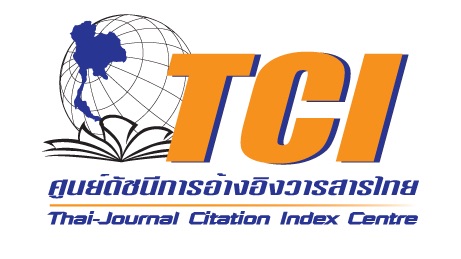An Analysis on Grammatical Errors of Comparative Sentences Using the Preposition “bi” of Chinese Program Students in Mueang District, Phetchabun Province
Keywords:
Error Analysis, Grammar, Comparative Sentence, Preposition “bi”Abstract
The purposes of this research were to analyze grammatical errors in sentences using the comparative sentence “bi (比)” in Chinese and to analyze the causes of the errors. In addition the guidelines for teaching the comparative sentence grammar “比” were suggested. The population was 45 Chinese program students, studying in Grade 12 of Wittayanukulnaree School and Phetpittayakom School. The research instruments used for the data collection consisted of translation tests and interview. The data was computed into frequencies and percentages. The research findings reveal that the participants produced 282 errors as a total. The errors in the structure “A 比 B + 还 + adjective” appeared as the most frequent found (26.24%) whereas the least occurrence was the errors made in the “A 比 B + adjective” structure (7.09%). In terms of error types, 36.87% of them concerned with inappropriate use of words and synonyms while 8.51% related to verbosity and other components. Moreover, the findings indicate 3 major causes that contributed to the errors namely the participants’ self, mother-tongue interference, and negative language transfer. The results can, additionally, advocate a group of instructors to start the class with simple structures and main elements of sentences; teaching complicated sentence structures and giving sample sentences as to compare with the native language should be then performed. The instructors should also observe their learner during the class. Ultimately, the data suggest the instructors to design practices properly regarding their target learners as well as to support and set scenarios, which allow the learners to exercise the knowledge they gain.
References
กนกพร นุ่มทอง. (2563). การศึกษาปัญหาการแปลบทขยายและส่วนเสริมจากภาษาจีนเป็นภาษาไทย. วารสารภาษาและภาษาศาสตร์, 38(2), 89-105.
กระทรวงศึกษาธิการ. (2551). ตัวชี้วัดและสาระการเรียนรู้ภาษาจีนตามหลักสูตรแกนกลางการศึกษาขั้นพื้นฐาน พุทธศักราช 2551. กระทรวงศึกษาธิการ.
ชัชศรัณย์ ฉัตรแสงอุทัย. (2556). การศึกษาวิเคราะห์การใช้คำเชื่อมบอกความร่วมในภาษาจีนกลางของผู้เรียนชาวไทย. จุฬาลงกรณ์มหาวิทยาลัย.
ฝ่ายวิจัยและบริการวิชาการ คณะมนุษยศาสตร์และสังคมศาสตร์ มหาวิทยาลัยราชภัฏเพชรบูรณ์. (2563). รายงานการสำรวจความต้องการการรับบริการวิชาการแก่สังคม คณะมนุษยศาสตร์และสังคมศาสตร์ ประจำปีงบประมาณ 2563. มหาวิทยาลัยราชภัฏเพชรบูรณ์.
แพรวา เพชรเชิดชู. (2552). การวิเคราะห์ข้อผิดพลาดในการใช้คำบุพบทภาษาจีนของนักเรียนไทยระดับชั้นมัธยมศึกษาตอนปลายในเขตกรุงเทพมหานครและปริมณฑล. (รายงานผลการวิจัย). มหาวิทยาลัยธุรกิจบัณฑิตย์.
Corder, S. P. (1973). Introducing Applied Linguistics. Penguin.
Jakobovits. (1971). Teaching Language as Communication. Oxford University Press.
Jia, C. L. (2019). Error Analysis of “bi” Sentences in Chinese of Foreign Students. The Farmers Consultant Magazine, 39(2), 172.
Liu, X. (2000). Introduction to Teaching Chinese as a Foreign Language. Beijing Language and Culture University Press.
Liu, X.L. (2011). “bi” in Teaching and Learning Chinese as a Foreign Languages. Language Teaching and Linguistic Studies, 33(5), 127-128.
Lu, J.J. (1994). Error Analysis of Foreigners Learning Chinese. Language Teaching and Linguistic Studies, 16(1), 49-64.
Song, X.X. (2019). Error Analysis of “bi” Sentences in Chinese of Foreign Students. https://www.sinoss.net/uploadfile/2019/0226/2019022
pdf.
Wang, X. (2012). Teaching Chinese as a Foreign Language of “bi” Sentences. Modern Chinese (Teaching Research Edition), 50(1), 300-301.
Zhou, X.B., Li, H.O. (2004). Introduction to Teaching Chinese as a Foreign Language. Sun Yat-sen University Press.
Downloads
Published
How to Cite
Issue
Section
License

This work is licensed under a Creative Commons Attribution-NonCommercial-NoDerivatives 4.0 International License.







